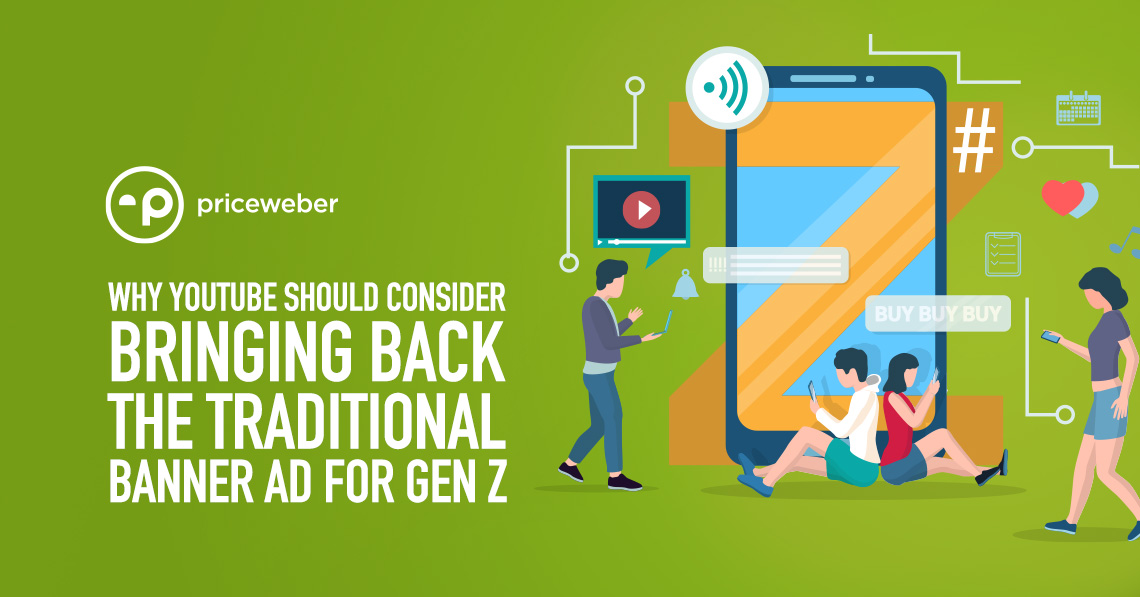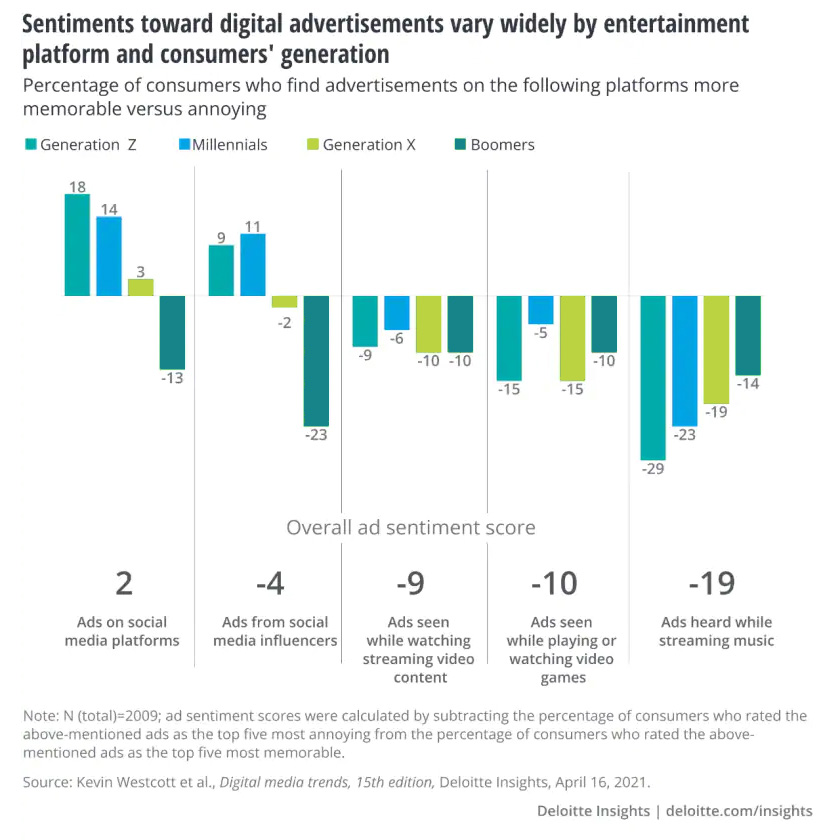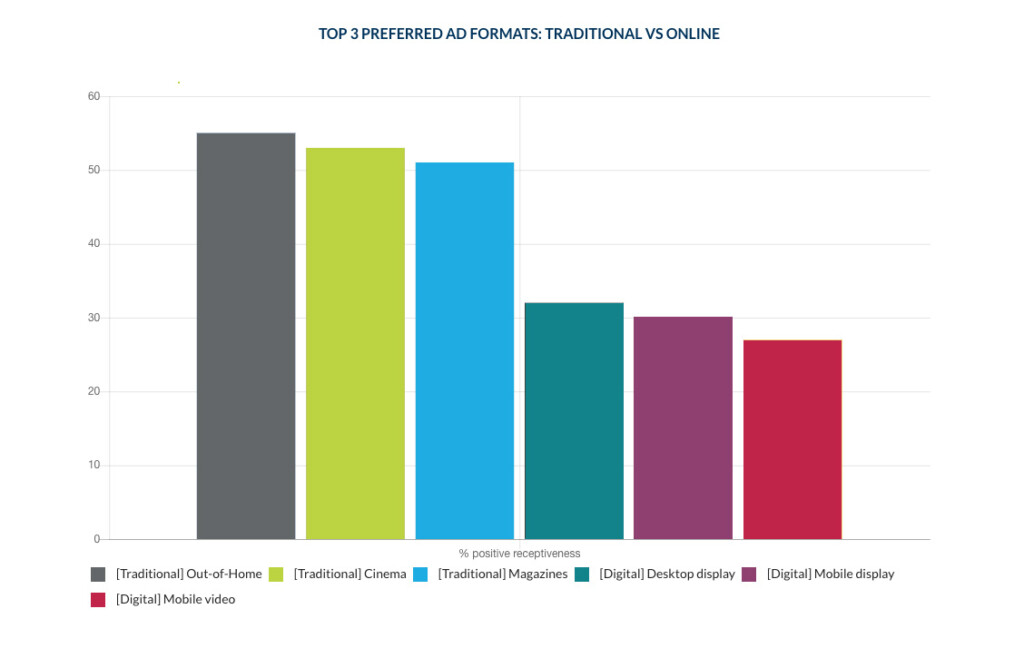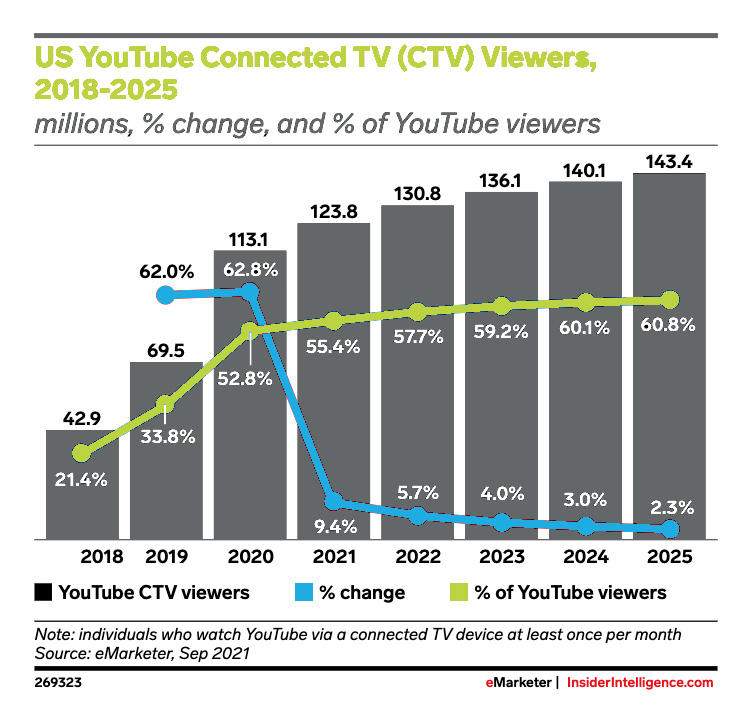YouTube has more than 2.68 billion active users as of 2023. Baby Shark Dance alone has been viewed on YouTube 12.3 billion times. Yet despite having 2022 revenues of $29.24 billion, YouTube’s revenues have dropped for three quarters in a row! So, while they didn’t ask, we’re offering a suggestion that might help – bring back the traditional banner ad! Maybe some 728 x 90 leaderboards or some 120 x 600 skyscrapers – in places that do not block, interfere with or delay video! Maybe even just a sponsorship option – think NPR only visual.
Because when you get right down to it, the biggest problem with the banner ads is that we’re still measuring them against 1999 metrics. In this issue of Plain Talk, we’ll build on past articles and discuss how the convergence of digital and traditional media and the increase in on-screen time have evolved media expectations, particularly for young people. We’ll then discuss how technological advancements and generational preferences have evolved to better support this digital marketing dinosaur. In doing so, we’ll argue that in this blended digital world we live in, banner ads should be viewed as online billboards, and thus they should be bought and measured primarily as top-of-funnel awareness tools … just like roadside billboards.
First – a one-paragraph history of banner ads
In 1994, when the internet was an infant, the banner ad was the first unit of advertising. It visually looked like a billboard, and because people tend to do what they know, and because of the 468 x 60 pixels size ratio, they were often graphically treated like billboards only with “click here!” in small text. And the masses did “click here” as told! Many early banner ads had astronomical double-digit click-through rates (CTR) as high as 78% on sites like Hotwired. Today, an average display ad CTR hovers at around 0.1%. So, when measured against search engine marketing (SEM) on a cost-per-click basis, banner ads fail! When measured against video on their ability to deliver a brand message, banner ads also fail.
Gen Z is an online-first generation!
As we discussed in Gen Z and the Case for Out-of-Home Media, studies show Gen Z are spending more than 10 hours a day on an electronic device, and on average, they use five screens a day. Gen Z is consuming 7.2 hours of video a day. So With 24 hours in a day and them averaging 6:57 minutes of sleep, they’re awake 17.05 hours, and only 7 of those hours aren’t spent with electronic devices. This means they are on an electronic device almost 60% of the time they’re awake. Additionally, over 40% of their awake time is spent specifically watching videos.
So, you think the best way to reach them is with online video?
Yes, but where to reach them and how to reach them are different problems! 99% of Gen Z are poised and ready to hit skip. In fact, according to research from Deloitte, people across the board, including Gen Z, view ads during videos as more annoying than informing. No brand wants to be annoying! This, we argue, is the crux of YouTube’s revenue problem.
This isn’t new. In 2017, a Forbes article about advertising to Gen Z stated:
Simply moving your television-style ads to platforms like YouTube doesn’t necessarily solve the problem. Even pre-roll ads are seen as disruptive, and if an ad starts playing on their phone, they’ll simply look over at their laptop until it’s over.
Your spots are being forced on a generation that grew up watching recorded content. They’ve been skipping ads their whole lives. When you force them to watch a spot, it puts intense creative pressure on the brand because the audience is already hostile to the disruption … even 5-second skip video ads. And the longer they’re forced to watch your spots, the more annoyed at and hostile toward your brand they are likely to become!
Can’t we just shift to influencer marketing?
Influencers are starting to lose their, well, influence in high-trust verticals!
Anything overdone or that gets tried too hard gets old with young people fast. While we’ve cited it in previous articles, it is worth noting again, Ernst & Young found, “Authenticity is the most important value for Gen Z — even beyond future plans and being rich.” There is nothing authentic about influencer marketing. Not surprisingly, in 2021, eMarketer found that adult members of Gen Z who are 18-24 are 3 times as likely to trust their friends and family’s product recommendations over an influencer’s recommendations. Of course, trust and envy are different measurables, so take this with a grain of salt if your product is high-fashion or a beverage.
But for Gen Z, it looks like in high-trust verticals like financial services, healthcare, and legal, as well as moms, dads, Aunt Alice, Dave from accounting, and their BFFs’ opinions, carry more weight than that of the latest trending hipsters! Opinions are offered, and advice is sought. And Gen Z will seek advice online or in person from their support systems when they want it. This generation craves all the info before they make a decision.
Making online advertising like offline
As discussed in our previous article, Gen Z likes online but dislikes online advertising. In fact, they disproportionately preferred all offline advertising formats, with out-of-home (OOH) being their favorite. For online, they preferred display to video.
You also have to imagine the motion and flash they’ve seen in most modern banner ads. So, while many “flash” banner ads are not interrupting video-like content like video ads, they are often equally disruptive in their obnoxious calls for attention.
Static banner ads don’t disrupt … they support.
Traditional banner advertising did not disrupt content. In fact, most of the time, maybe because of early technology limitations, they didn’t even exist in live areas. On webpages, they just framed the content and built brand awareness.
Does YouTube support this? The standard aspect ratio for YouTube is 16:9, but viewing devices that are becoming increasingly larger are very much different ratios. So while YouTube is 16:9, most phones bought in the last two years have 19.5:9 aspect screens, and mobile phones account for 63% of YouTube usage. Tablets, which make up 8% of YouTube users, generally have ratios of 16:10, 16:9, or 4:3, with a push toward the golden ratio of 16:10. Some high-end TVs are now also offered in the non-16:9 ratio of 21:9. We only bring this up because YouTube is currently cropping and morphing video to fit screen ratios.
Meanwhile, devices are getting bigger! The average size of a smartphone screen was 6.3 inches in January 2022. This has more than doubled since 2009 when the average was just 3! Over the same period, the average size of TVs sold in the U.S. has increased from over 10” to 47.5”.
So, since at least 71% of the devices accessing YouTube aren’t 16:9, and screens have arguably become large enough to sacrifice some real estate to a banner or sponsorship while assuring video is being delivered in its native 16:9 aspect ratio, for technical reasons, banner ads would be advantageous!
In this format, we would measure banner ads the way we measure brands on the wall in a stadium. Primarily as awareness tools – but that’s not to say they can’t or won’t convert, especially over time.
Beyond decreased revenue, YouTube viewership growth is slowing!
YouTube’s growth is flattening. In 2020, it grew 62% and 69% in 2019. Then in one year, growth fell off a cliff to less than 10%. That happened in 2021 when everyone was staying home and online more. Now it’s projected to further cliff down to 2.3% in 2025! As I type these last few sentences, I hear them narrated in my head by Sally Struthers or Sarah McLachlan. But there’s no need yet to send your spare change to Alphabet!
And while no doubt much of this growth wasn’t because of the annoyance of a 5-second pre-roll before the DIY video you’re trying to watch on how to replace your washing machine’s transmission, some of it was! Maybe the annoyance didn’t deter my search, but for a casual viewer looking to be entertained, it’s safe to assume social media – TikTok and Instagram’s short video blitzkrieg approach down the rabbit hole of what was your day is stealing share of time from YouTube’s more deliberate format.
YouTube ads & Gen Z
Do Any of YouTube’s current ad formats support what we know about Gen Z and their habits? No!
Outside of search results, when the typical Gen Zer turns their phone sideways, all static ads in the search disappear. All that is left are disruptive ads that annoy. There is one banner ad option, but it’s a 480 x 70 banner ad overlay. This means popup! It goes over your content and annoys you.
To advertisers
This last argument for static banner ads on YouTube is for advertisers. In its November 2018 Insight piece titled, “‘True Gen’: Generation Z and its implications for companies,” McKinsey concludes in its research:
The core of Gen Z is the idea of manifesting individual identity. Consumption therefore becomes a means of self-expression—as opposed, for example, to buying or wearing brands to fit in with the norms of groups.
This single statement is paramount in understanding why in fashion, well-segmented banner ads might be more effective than video for conversions, even if it is watched. Video, for the most part, is expensive both in time and dollars to produce; that’s why it generally focuses on brands vs. individual products. And if it does focus on a product, it is assumed which product(s) the consumer will want. There are a number of other assumptions generally made about whom the ideal consumer is in producing the spot as well.
If YouTube offered a non-disruptive banner ad, it could be programmatically customized and segmented to the user. There could be hundreds of ad options that were product-centric and supported by the brand vs. brand-centric.
Imagine a small ad space outside of the video with no competitive motion. Sponsored by (logo), tagline, small picture of targeted apparel. No click here. No flashing sale!
By shifting production budgets into personalization and aligning products with customers vs. expensive brand commercials that are ignored and skipped, advertisers could better connect with younger consumers and do their part to revert YouTube’s subpar growth.
In conclusion, banner ads can hit differently.
So, if we know Gen Z hates ads that disrupt their videos and find them disruptive, and we know they like OOH in the “real” world because they’re passive, why shouldn’t YouTube look to create similar passive static banner ads as “online OOH” where they spend most of their time?
Have any ideas on how to better reach Gen Z?
Drop us a note or call us at 502-499-4209. Like what you read today? If you’re not already a subscriber to our Plain Talk newsletter, you can subscribe below.





